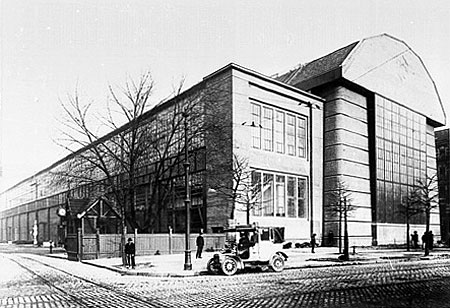Cubism and Corporate Identity (1905-1915)
Summary:
In this week’s lecture, we learned about the impact of modern art, plakatstil, and the origins of corporate identity. Modern art was developing. Artists such as Paul Cezanne, Pablo Picasso, Georges Braque, and Marcel Duchamp were all part of the art movement known as cubism. The Armory Show in New York City was an international exhibition of modern art that changed the way Americans thought about modern art. Hundreds of artists participated in this exhibition and The Armory was called the most important exhibition ever held in the US.
In 1905, Lucian Bernhard designed a poster for Priester Matches, creating the plakatstil style (poster style). This style consisted of only two basic elements, the product name and the product image, and conveyed a message that was both impactful and effective.
The AEG turbine factory designed by Peter Behrens was the first to have a logo and a corporate identity, making Behrens the first logo/corporate identity designer. This designer was also the first to design a typeface for a specific company where the company only used this typeface- the Behrens Schrift typeface designed for AEG.
Many other inventions were also created during this time. The first Model T was produced by Ford Motor Company and invented the factory line, cutting costs of production. In 1909, an early Autochrome colour photograph was invented by the Lumiere Brothers, Gertie the Dinosaur by Winsor McCay introduced keyframe animation, and in 1914, the American Institue of Graphic Arts (AIGA) was founded.

